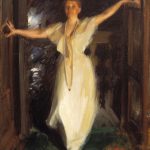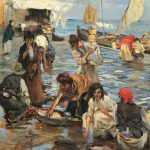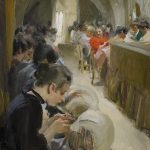
Anders Zorn (1860–1920) was a Swedish painter and sculptor renowned for his portraits, genre scenes, and nude studies. He achieved international acclaim for his mastery of watercolor and his ability to capture the play of light and shadow in his paintings. Zorn was a prominent figure in the late 19th and early 20th centuries, and his work is often associated with the Realist and Impressionist movements.

- Early Life and Education: Anders Leonard Zorn was born on February 18, 1860, in Mora, a town in central Sweden. He showed an early talent for art and received his first commission at the age of 15 to paint a local minister.

- Training in Sweden and Abroad: Zorn studied at the Royal Swedish Academy of Arts in Stockholm and later traveled to London, Paris, and Spain to further his artistic education. During his travels, he was exposed to a variety of artistic styles, including the work of the French Impressionists.

- International Recognition: Zorn gained international recognition for his artistic skills and became a popular portraitist, capturing the likenesses of many notable figures, including three U.S. Presidents: Grover Cleveland, William H. Taft, and Theodore Roosevelt. His reputation extended to Europe and the United States.

- Mastery of Watercolor: Zorn was particularly known for his mastery of watercolor, a medium that he used with great skill and innovation. His watercolor works often featured loose, spontaneous brushstrokes, capturing the vibrancy and immediacy of the scenes he depicted.
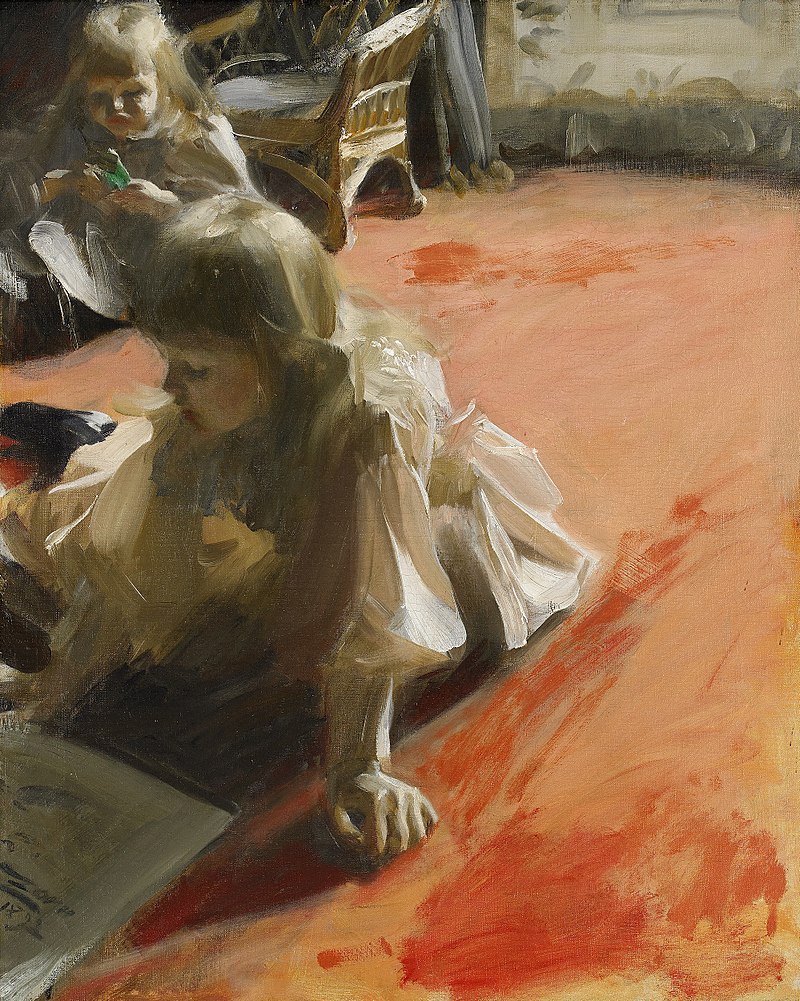
- Famous Paintings: Some of Zorn’s most celebrated works include “Midsummer Dance” (1897), “Mrs. Walter Rathbone Bacon” (1897), and “Isabella Stewart Gardner in Venice” (1894). His nude studies, such as “The Mermaid” (1888) and “Nude in Firelight” (1893), also gained attention for their sensual and evocative qualities.
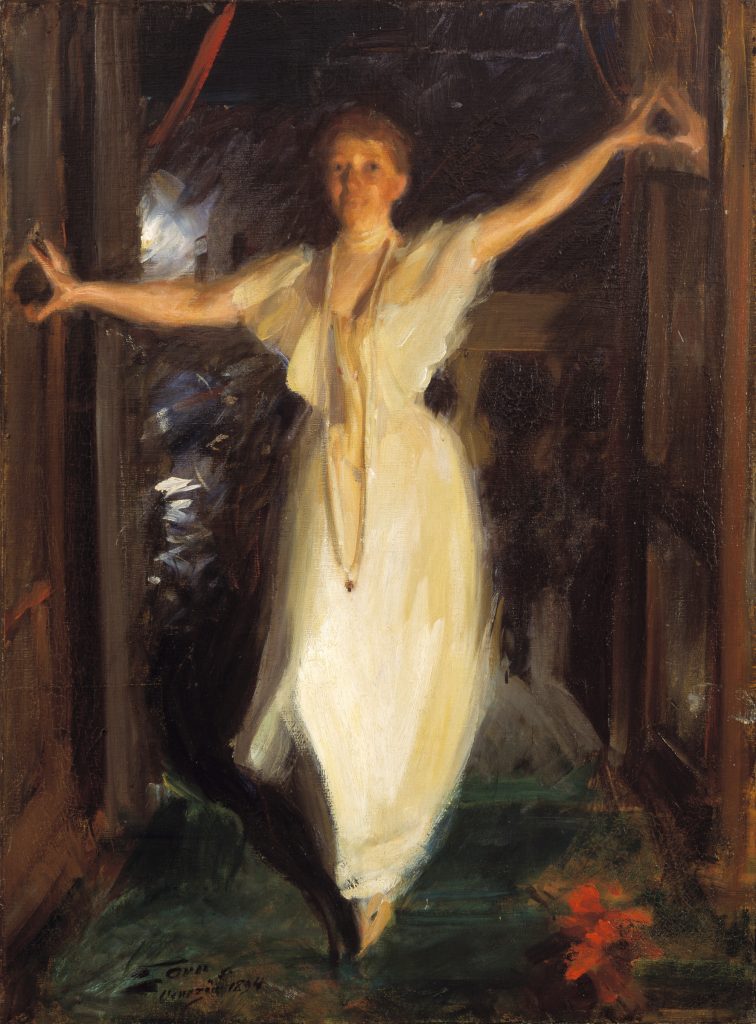
- Return to Sweden: Despite his international success, Zorn remained closely connected to his Swedish roots. He purchased a home in Mora, named Zorngården, where he spent much of his later life. The house is now a museum showcasing his art and personal belongings.

- Legacy: Anders Zorn’s legacy endures, and he is considered one of Sweden’s greatest artists. His contributions to portraiture and watercolor have left a lasting impact on the art world. The Zorn Palette, a limited palette of only four colors (yellow ochre, ivory black, vermilion, and flake white), is still used by artists today.
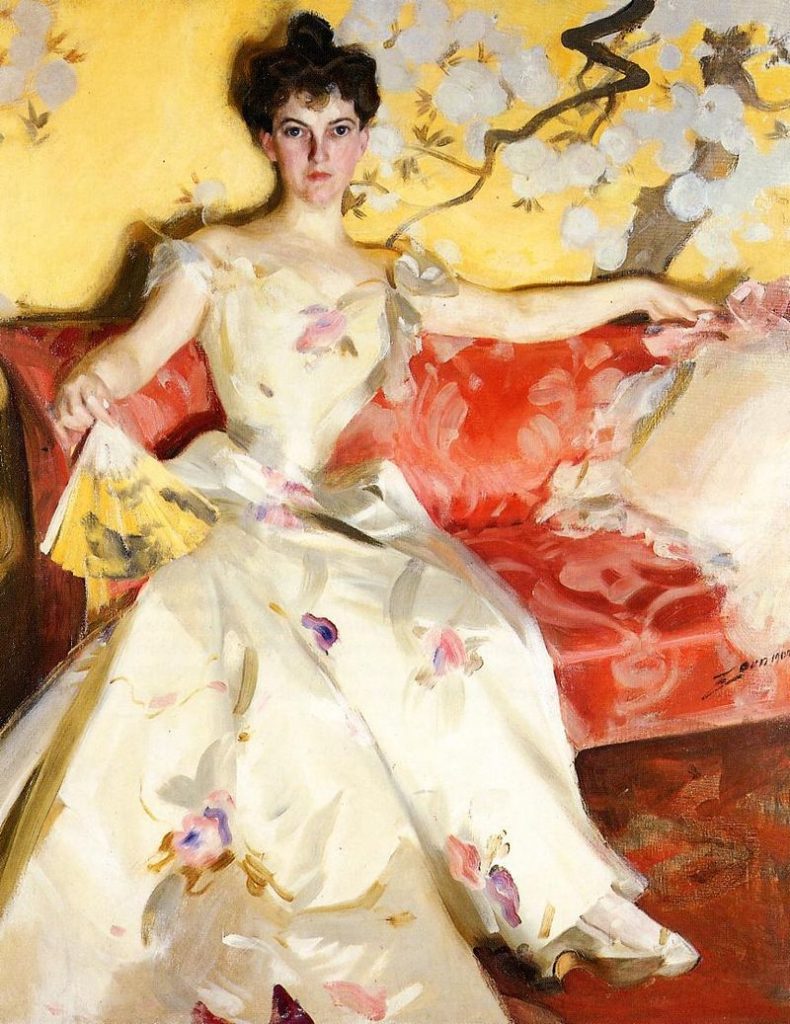
Anders Zorn passed away on August 22, 1920, in Mora, Sweden. His work continues to be celebrated for its technical brilliance, the richness of his color palette, and his ability to convey the character and atmosphere of his subjects.


